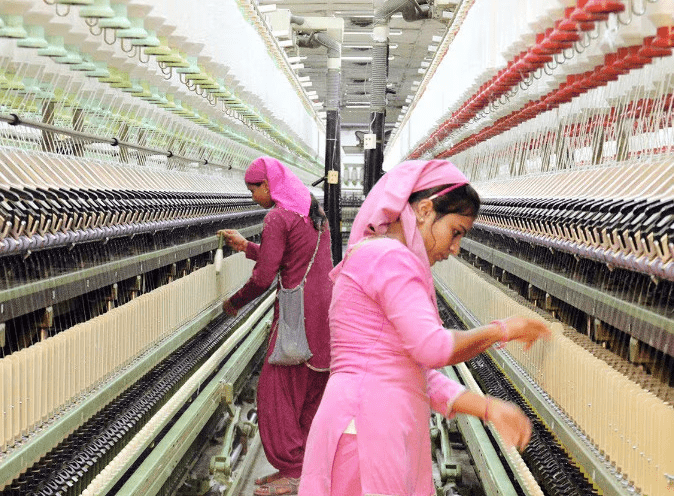AI Generated Summary
- With a substantial portion of India’s yarn exports tied to Bangladesh, the current crisis presents a unique opportunity for Punjab to position itself as a key alternative to Western fashion brands that rely heavily on Bangladeshi manufacturing.
- With approximately 10,000 garment and textile units in Ludhiana alone, and half of these associated with the corporate sector, Punjab’s potential to absorb a significant share of global textile orders is substantial.
- While the crisis in Bangladesh presents a grave challenge, it simultaneously opens up a promising avenue for Punjab and the Indian textile industry.
As turmoil continues to engulf Bangladesh, particularly affecting its textile sector, a silver lining may be emerging for Punjab and the broader Indian textile industry. With a substantial portion of India’s yarn exports tied to Bangladesh, the current crisis presents a unique opportunity for Punjab to position itself as a key alternative to Western fashion brands that rely heavily on Bangladeshi manufacturing.
Punjab, a significant player in the Indian textile sector, exports around 40,000 tonnes of yarns monthly to Bangladesh, covering various types including cotton, acrylic, and woolen. The state’s contribution stands at a notable 35 percent of this volume. This export relationship is not just significant for its scale, but also its financial impact: Punjab’s textile sector generates over Rs 4,000 crore annually from these exports.
However, the ongoing border closure with Bangladesh has left consignments worth over Rs 200 crore stranded, with potential losses amounting to Rs 1,000 crore. This disruption is not just an economic setback but also a clarion call for rethinking supply chains in the global textile industry. Amit Thapar of Ganga Acrowools Ltd highlights that if the crisis persists, orders worth Rs 4 crore may be at risk, showcasing the gravity of the situation for Punjab’s textile sector.
This crisis presents a timely opportunity for Punjab’s textile industry to capture a greater share of the global market. The garment industry’s stakeholders, including Ludhiana, Noida, Tiruppur, and Gurugram, are eyeing a shift in global orders that could potentially redirect attention to India. The suspension of trade with Bangladesh has inadvertently opened a gateway for Indian textile manufacturers to fill the void left by disrupted supply chains.
Punjab’s textile industry is well-positioned to seize this opportunity, provided that strategic actions are taken. Major Indian corporate houses and fashion brands such as Reliance, Tata, and Madura Coats, along with international labels like Marks and Spencer and Polo, have previously sourced from Bangladesh. With Bangladesh facing severe disruptions, these brands might consider shifting their orders to India, potentially fueling a renaissance in Punjab’s textile industry.
Sudershan Jain of Oner Knitwear articulates a hopeful vision: “India now has a good opportunity to make a comeback. If governments support the garment industry, this could be a golden opportunity for manufacturers to get orders in bulk.” This sentiment is echoed by Lalit Thukral of the Noida Apparel Exporters Cluster, who reports growing interest from foreign buyers and anticipates a shift in orders to India.
With approximately 10,000 garment and textile units in Ludhiana alone, and half of these associated with the corporate sector, Punjab’s potential to absorb a significant share of global textile orders is substantial. India’s textile sector, which earned $44 billion in exports last year, stands to benefit greatly if it can effectively capture even a fraction of Bangladesh’s $47 billion apparel market.
While the crisis in Bangladesh presents a grave challenge, it simultaneously opens up a promising avenue for Punjab and the Indian textile industry. By leveraging this opportunity and ensuring robust support and strategic planning, Punjab could emerge as a major hub for global textile orders, offering Western fashion brands a reliable and resilient alternative to their current supply chains.
The opinions expressed in this article are those of the author. They do not purport to reflect the opinions or views of Khalsa Vox or its members.




